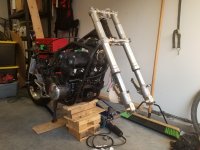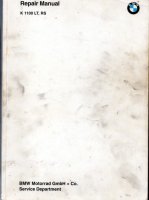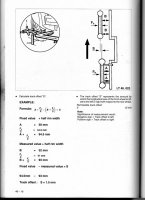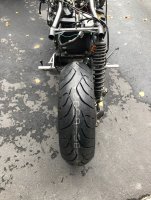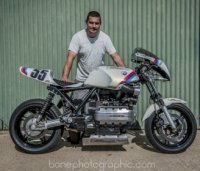chickenStripCharlie
Coast to Coast
As far as i can tell, i installed the bearings and inner spacer properly. Everything was seated as it should be.
I measured the spacers needed for my GSXR forks as follows:
- bearing to bearing outer surface (at inner ring): 82.5mm
- gsxr fork to fork: 170mm
(170-82.5)/2 = 43.75mm per side
After i got the spacers i noticed my wheel wasn't exactly centered! The only explanation i can come up with is that the bearing centers are not the same as the hub center, and that the bearings are "offset" to one side a little bit. Is this possible? Has anyone run into this before?
Since the axle goes through the bearings (A, B) it is not in line with my rotor surfaces R1,R2, higher up so i cannot line it up to center the hub, so i measured at the bearings, only to run into this issue.
Does this make sense to anyone? Have you seen this before, where the bearing centers are offset a little compared to the hub centers ??
It makes me think something is wrong here, because i can't think of a reason why the bearings would be offset, but i'm certain i seated the bearings properly, using the proper length distancer in between.
This comstar wheel does have the speedo boss on one side and bearing retainer ring on the other, so it *MIGHT* be possible that it has some funky bearing offset on it??

This is the comstar wheel i'm using:

I measured the spacers needed for my GSXR forks as follows:
- bearing to bearing outer surface (at inner ring): 82.5mm
- gsxr fork to fork: 170mm
(170-82.5)/2 = 43.75mm per side
After i got the spacers i noticed my wheel wasn't exactly centered! The only explanation i can come up with is that the bearing centers are not the same as the hub center, and that the bearings are "offset" to one side a little bit. Is this possible? Has anyone run into this before?
Since the axle goes through the bearings (A, B) it is not in line with my rotor surfaces R1,R2, higher up so i cannot line it up to center the hub, so i measured at the bearings, only to run into this issue.
Does this make sense to anyone? Have you seen this before, where the bearing centers are offset a little compared to the hub centers ??
It makes me think something is wrong here, because i can't think of a reason why the bearings would be offset, but i'm certain i seated the bearings properly, using the proper length distancer in between.
This comstar wheel does have the speedo boss on one side and bearing retainer ring on the other, so it *MIGHT* be possible that it has some funky bearing offset on it??

This is the comstar wheel i'm using:



